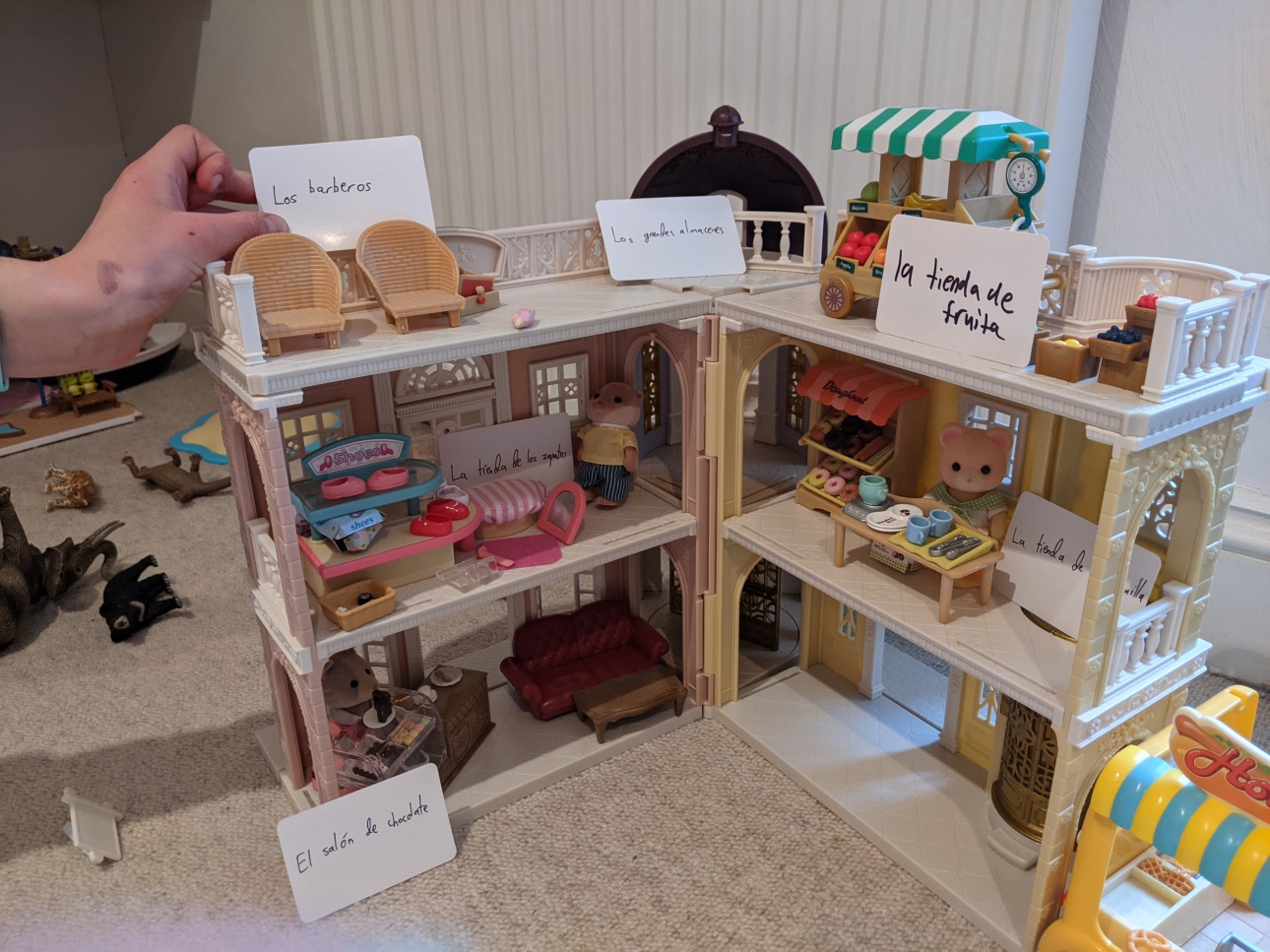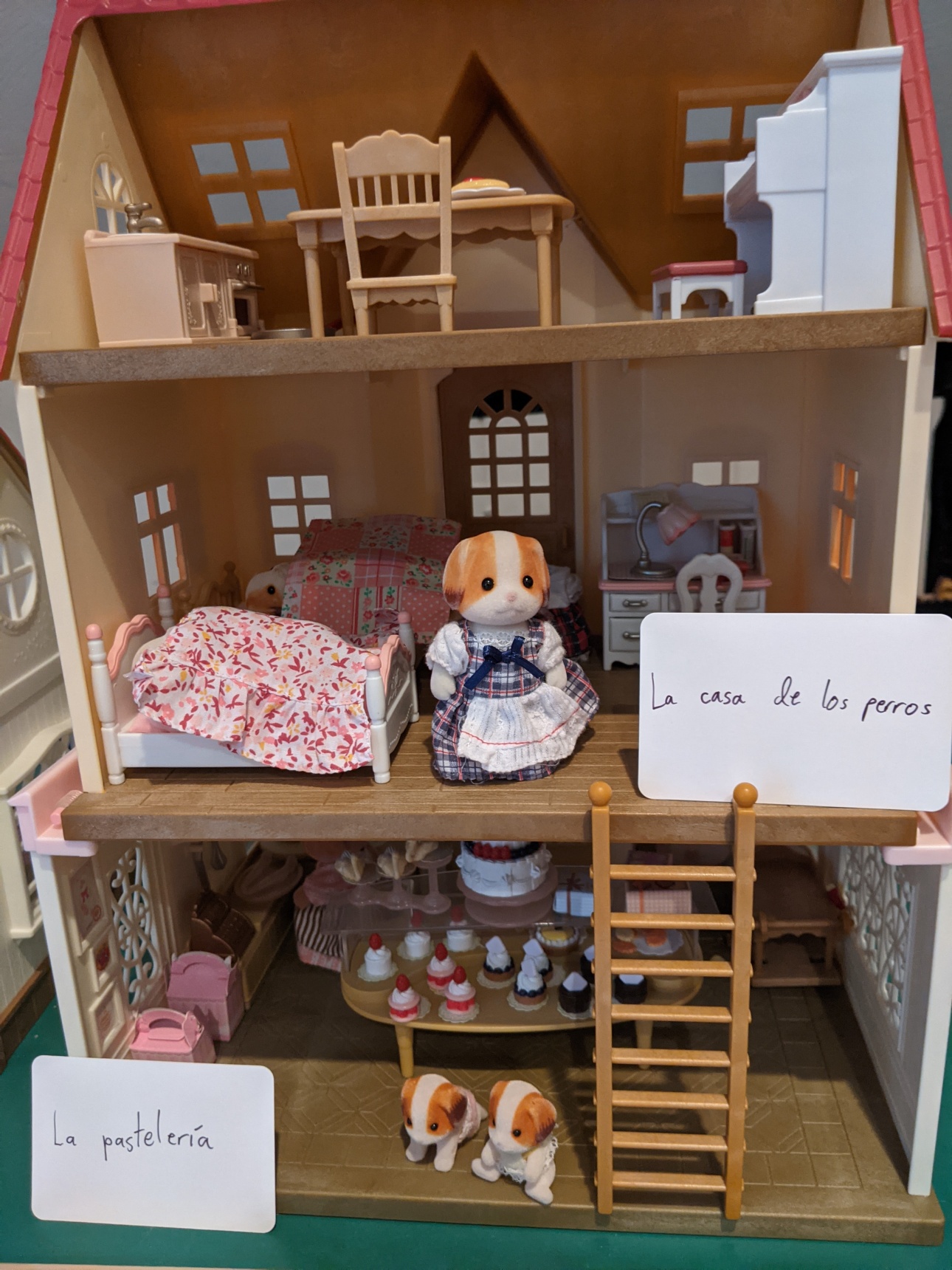A Fun Day of Spanish
I love to have a plan – and we achieve so much more if we have one – but I have no qualms in throwing said plan out of the window if I feel we need a change in direction (which is why I always write our homeschool plans in pencil!).
This could be to factor in more days out or meeting with friends; to take advantage of new opportunities or interests that pop up through the year; to give them a break if I see they’re flagging; or to intensively focus on one of their passions or conversely, an area they’re struggling with.
Only two weeks into our new term and rhythm, I decided to mix it up a little and add in a day filled with interesting ways of practising their Spanish. Bean10 had been getting somewhat demoralised with his Spanish written work, so I wanted to inject a bit of fun into the subject and at the same time give him a much-needed confidence boost.
The Beans threw themselves into the activities with gusto and had a thoroughly lovely day which involved much giggling alongside quite a bit of learning. At the start of the day, I showed them a list of some ideas I’d come up with for them to chose from, although they were free to suggest their own or adapt the ones on the list.
Here’s what we got up to:
Spanish Conversations
Bean10 suggested we try to only speak Spanish for the main part of the day.
This we all attempted – although it was a mish mash of Spanish and English (!) – and it turned out to be a real bonding experience as we helped each other to compose our sentences.
Although we were very far from perfect (I’m learning alongside the Beans), it showed we could communicate in the language, with a little help from Google Translate! It also proved a confidence builder as the kids realised just how much Spanish vocabulary they knew.
A Spanish Café
Such a simple activity – to create their own Spanish café menu – but one that Bean11 in particular loved. They worked together, happily planning and discussing which items would be on their menu, every so often looking up new vocabulary or checking the cupboards to see what we had available for their café. Bean11 wanted to include some options we didn’t have, just so she could write ‘agotado’ (sold out) next to them!
They separated the menu into different sections: one for drinks, fruit, snacks and a final one for main meals (ranging from chicken dishes to cereal!). Once finished, they offered me their creations and in Spanish, we completed the ordering process. It was rather an eclectic set of options and I didn’t fancy beer so early in the day!, so I ordered coffee, an orange and a nut bar from Bean10, and a fizzy water and nuts from Bean11, which they were so excited to present to me!


Incorporating Spanish into Their Play
Next up we brought Spanish to their toys! The Beans have a whole Sylvanian/Lego world set up in the playroom – a long-standing and ever-evolving game: each family have their own jobs; they have concerts and dance shows; there’s a government and taxes; and the laws are constantly being renegotiated! I find it fascinating to watch them practising real-world scenarios through their play. Bringing Spanish to this domain was never going to feel like work to them.
I handed the Beans a stack of index cards and tasked them with labelling their world in Spanish. And label they did: each animal family, building and form of transport. Even the tiny hotdogs had a label! It was, without a doubt, their favourite activity. They showed me around the room excitedly pointing everything out.




Next up, they allocated me a Sylvanian and then directed me in Spanish to move through the city using various forms of transport on the way – swapping from a car to a tram and then a plane – travelling between the locations – the park to the school and then onto the department store! This was a great way to practise their directional language.

They’ve since agreed amongst themselves to keep the labels with Spanish words they’d had to look up, until they become more familiar with them.
Spanish “I Spy” on a Walk
Another super simple activity that I think we’ll incorporate into more of our walks going forward. Before setting off, we translated the phrase: “I spy with my little eye, something beginning with …” into Spanish (it’s: espío con mi pequeño ojo, algo que comienza con …). And then they were off, spotting all sorts of objects for which they knew the Spanish translation.

It turns out their vocabulary is much wider than mine – they were much faster at guessing the answers than me! They enjoyed it so much that during our next walk, they asked if they could play again. Next time, I think we’ll learn some new vocabulary for objects we’re likely to spot before setting off and this will be a great way of practising them.
Watching Cartoons in Spanish
We opted for Peppa Pig! I thought it would be simple enough for them to understand. Turns out Daddy Pig speaks at a rate of knots (as do the other characters), although he does sound much more sensible when speaking Spanish!
Initially, we all found it quite hard to decipher, but slowly we started to recognise more and more words, plus the stories are simple enough that you know what’s going on without understanding every spoken word. They thought it was fun and so watched a few episodes over lunch. It seems to be a good way of getting their ear into the language, and you can also watch it with the Spanish subtitles to make it easier.
Spanish Reading
Each week, we’re working our way (very slowly) through this Spanish reading book: Practice Makes Perfect Spanish Reading and Comprehension, which is filled with interesting stories although they’re on the harder side (and we don’t do all the associated exercises). The last story we read was a legend about how rainbows were created from seven beautiful butterflies.
Today though we choose to read In My Family, En Mi Familia by Carmen Garza. It’s a book portraying the author’s Mexican-American culture through her childhood memories. An artist by trade, her pictures are evocative and the descriptions of each are written first in Spanish and then English, which is perfect for us. The Beans try their best to read them in Spanish and then validate their understanding by checking the English translation.

Taking on the Teacher Role
The Beans relish taking on the teacher role, particularly if they test me and I get something wrong!
Each day, we do one track of the Michel Thomas Perfect Spanish course (this one). As he teaches the lesson, he provides lots of opportunities to practise the concept taught. Recently, I’ve started letting the children take it in turns to “play the teacher”, stopping the tracks at the right point and helping whoever’s turn it is to compose their sentences if needed. They love doing this. Today was Bean11’s turn to help us all with conjugating the imperfect tense.

We normally also practise conjugating one tense for one verb each day. But today I challenged them to conjugate a regular verb in all the tenses they’ve learned to date: present, simple past, imperfect, future, conditional and past perfect. Bean10 was the winner of said challenge making NO mistakes! They were thrilled to find that I was the worst of the three of us – ahem, must practise more!

Spanish Holiday Planning
For the final exercise they selected, I handed them the Spanish Lonely Planet guide and told Bean10 he was going on a three-day trip to Barcelona and Bean11 to Madrid.
Their mission was to scan through the sections in the guide and select three places they’d like to visit in the daytime, along with three restaurants for the evening. They were then to write up their choices in Spanish along with the opening times, entrance prices and, for the restaurants, the cost of an average main meal.
Again, this proved to be a fun way of practising their Spanish and the children really enjoyed choosing what to do and where to go, with Bean10 particularly keen to visit the Camp Nou, Barcelona football stadium one day.

As always, I had far more ideas on the list than we had time to complete, such as writing up our weekly shopping list in Spanish; playing KLOO (a card game where you construct sentences in Spanish); drawing and labelling a map of all the Spanish-speaking countries in the world (using this Draw Mexico, Central and South America book to help); writing about Bean10’s favourite cricket match and much more.
But, seeing as this one was such a hit, that just leaves plenty of additional options for us to try on our next fun Spanish day!
How about you? How do you teach, practise or reinforce language skills in your homeschool? I’d love for you to share your ideas in the comments below.







What a wild variety of activities! Sounds fun.